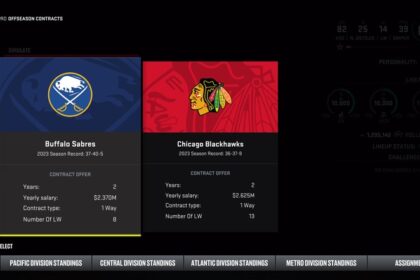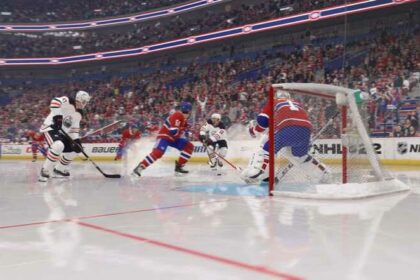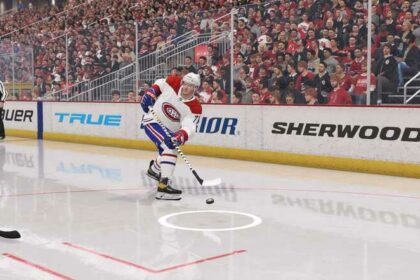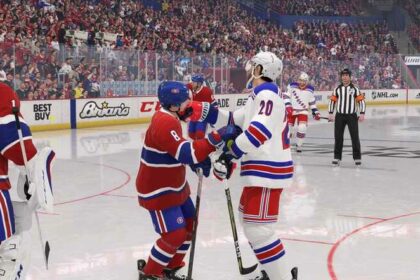Like last year, in NHL 22 Be a Pro, likeability will play a role in creating your player and the storylines that revolve around him.
More importantly, your likeability levels might have an impact on what happens on the ice. You will get more minutes if your management likes you, more passes if your teammates like you, etc. Getting your likeability levels up might not be a top priority but it can make your life easier and help you achieve your goals quickly.
Here is our guide on NHL 22 Be a Pro likeability.
Teammate Likeability
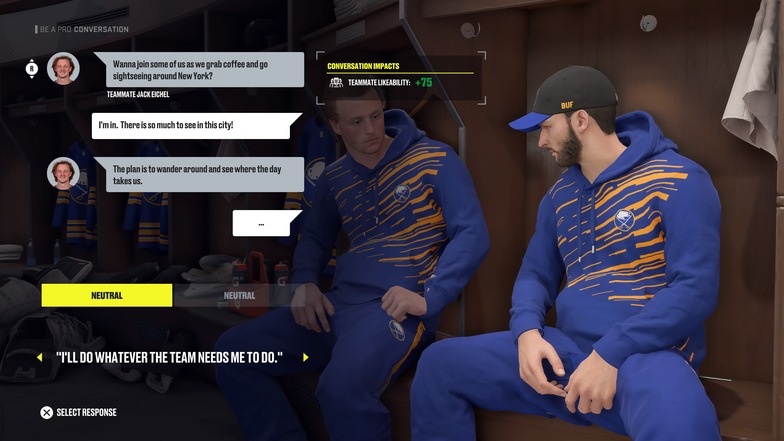
Teammate likeability impacts your relationships with the other players, both on and off the ice. According to the in-game instructions, higher teammate likeability will make other players more willing to pass you the puck and give up whatever they might be doing at the moment.
Personally, I found no significant differences between low and high levels of teammate likeability in terms of receiving more passes. Whether or not a teammate will pass you the puck is much more impacted by your positioning and skating direction than anything else. I never felt like my teammates were selfish or anything – I received the puck every time I asked for it, even when my teammate likeability was low.
However, if you want to become the team captain and generally be perceived as a team leader, you’ll need high teammate likeability.
How to Increase Your Teammate Likeability
Teammate likeability is probably the easiest to ramp up.
You’ll have lots of conversations with your key teammate – if you got drafted 1st in NHL 22, this will be Jack Eichel. You can easily pick up likeability points in these conversations, as well as in conversations with the media, your agent, and your coach.
Another way to increase your teammate likeability in NHL 22 is to complete in-game challenges from your coach by replying with the Team option. These challenges will be even easier than Star challenges so it’s really easy to get high teammate likeability early on.
Brand Likeability
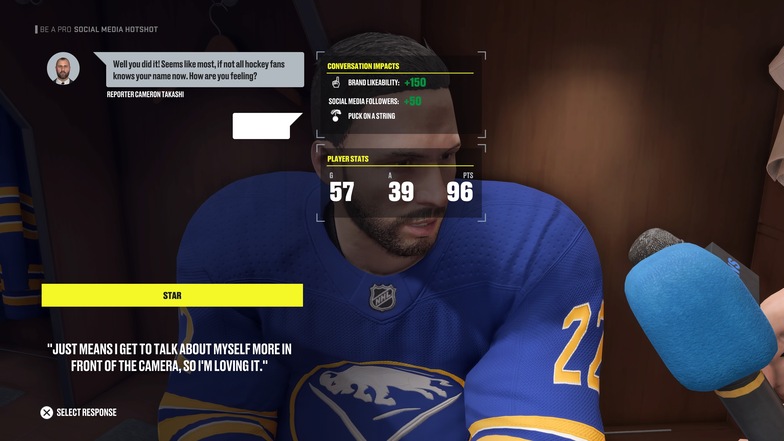
Your brand likeability impacts your endorsements, social media followers, and other things that have nothing to do directly with your play.
Increasing your brand likeability should be important to you if your goal is to become a marketable superstar, one of the most recognizable names around. Getting more social media followers will also unlock unique salary perks that will help you improve your game.
How to Increase Your Brand Likeability
Increasing brand likeability is a little harder, especially since it’s often opposed to teammate likeability. Star answers in interviews usually exclude Team answers and even give a teammate likeability penalty. Also, a lot of people find Star answers a little selfish and arrogant. If you were to play the “good guy” role and always give the best answers, Star dialogue options would be your last choice.
A great way to increase your brand likeability is to accept challenges from the media and respond to in-game challenges from the coach using the Star dialogue option. This will give you a brand likeability boost without sacrificing teammate likeability in return.
Some media challenges will give you huge brand likeability boosts of up to 600 points. For example, you might come close to breaking the franchise rookie points record. When asked about this, you can promise to do it in the next game and earn 600 brand loyalty points.
Management Likeability
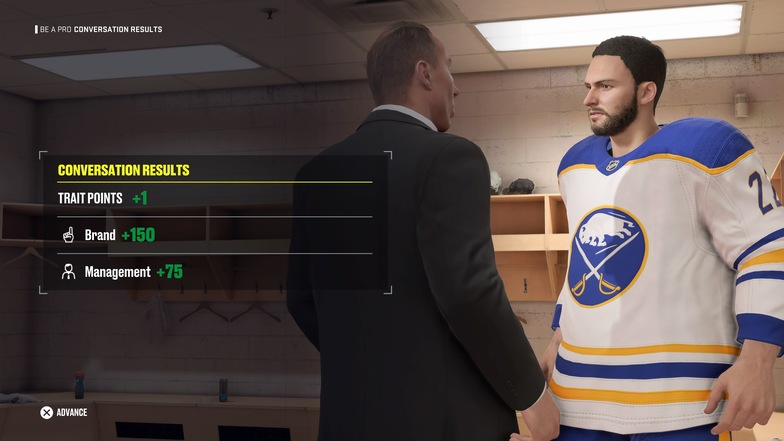
Management likeability impacts your time on ice, as well as your line scores. Keeping your management likeability high, and you’ll get more minutes.
It’s also quite possible that becoming the team captain depends on what the management thinks of you. I became the team captain after my second season, when both my teammate and management likeability we well over 7,500.
How to Increase Your Management Likeability
Like with teammate and brand likeability, the most common way to increase management likeability is by choosing the right dialogue options in conversations. This mostly refers to conversations with your coach, which will mostly be about your performances, form, and current winning/losing streak.
Your coach will also give you unique challenges to score, get a point, get an assist, win the next game, win 2/3 games, etc. Completing these challenges will give you a significant management likeability boost.
Another thing you can do is pay attention to dialogue options when talking with your key teammate. You’ll often see your teammate suggesting doing something behind the management’s back like watching a movie the night before the game and eating fast food. If you’re concerned about management likeability, choose the safe option and risk offending your teammates. In some cases, you’ll have the option to invite your coaches to join you and get points with both your teammates and management.
Management likeability will also often increase as a result of completing any challenge, regardless of whether you chose Star or Team options.
Why Is Likeability Important?

But, what can you even do with likeability?
It seems that the biggest use of likeability is that it helps you achieve your Storyline goals. For example, you will likely get the Social Media storyline that requires you to achieve a certain level of brand likeability. Other storylines will require a high teammate likeability score.
The rewards for achieving these targets will be some of the best Superstar X-Factors in the game.
Higher likeability also comes with other bonuses. For example, increased brand likeability and more social media followers will help you get salary perks and endorsements that will boost your attributes.
Final Word
Likeability in NHL 22 Be a Pro does feel a little incomplete as a feature. You’ll max out all three likeability meters in your second or third season, leaving you uninterested in all conversations in the game going forward. And, since there are so many conversations going on all the time, everything apart from the stories and rivalries you create in your own head will become boring.
Still, likeability will matter early on and help you complete challenges, unlock some important perks and X-Factor abilities.
You should pick a priority between brand and teammate likeability in your first season so that you can max one of those out first. After that, it’s pretty much all about following storylines and giving the right answers. You’ll have 10,000 in all three likeability matters by the middle of your third season anyway.

